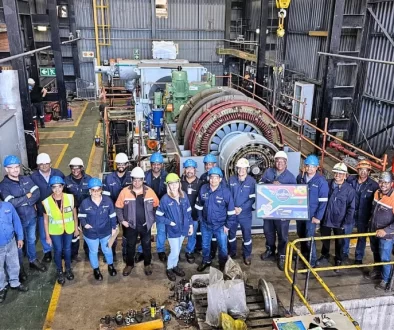What does climate change mean for our wetlands in South Africa?
What does climate change mean for our wetlands in South Africa?
Globally, wetland ecosystems provide many regulatory services such as water purification and flood attenuation. In Africa, wetlands are very important to many people by providing provisioning services such as fodder for grazing, and water for domestic and agricultural use. In the face of climate change, some of these services are becoming increasingly important, as is the growing need to appreciate how society, wetlands and climate are closely connected in direct and indirect ways. While wetlands may be victims of human-induced climate change, at the same time they also provide a way of lessening the change itself and helping us to adapt to climate change.
Human induced climate change is a reality and threatens to alter temperatures and rainfall patterns across the globe significantly by the end of the 21st century. Warming is predicted to be larger in Africa than the global annual mean, with drier subtropical regions (i.e. South Africa) warming more than the moister tropics. Rainfall in Southern Africa is likely to become generally more variable. A decrease in rainfall is predicted for much of the winter rainfall region (Western and Northern Cape and parts of the Eastern Cape) and western margins of the country with greater rainfall predicted on the eastern margins.
Above all else, wetlands are sensitive to the amount and seasonality of water they receive, and rely on a positive water balance, for at least part of the year, for their existence. Climate is one of the most important external drivers which determine the quantity and timing of streamflow in wetlands. Even subtle shifts in climate may alter not only the quantity of water made available to wetlands, but also the timing of the water input. Because ecological processes in wetlands are largely regulated by the quantity and timing of flows, major climate change-driven changes in water flows are likely to lead to change in wetland structure and functioning and therefore the goods and services they provide to people.
Dams, water abstraction, drainage, alien species and pollution are all degrading our wetlands, reducing their resilience (their ability to recover from disturbance or shocks). Many of our wetlands in South Africa are seasonal or temporary in character, flooding only during the wet season or for a short period when there is temporary abundance of water in the landscape. These “drier” wetlands may be more vulnerable to changes in water timing and reductions in quantity than those wetlands that have a more secure and abundant source of water. Many of South Africa’s wetlands have a connection with an aquifer (ground water) that provides water during periods of no rainfall. It is expected that changes in temperature and rainfall will alter recharge rates to groundwater stores reducing the discharge of water from these into wetlands. These types of wetland are likely to be vulnerable to climate change. Wetlands without water (or considerably less water) may become dry-lands, losing many of their ecological attributes that make them valuable to people.
Globally, wetlands are a huge store of carbon, and although occupying only 4-5 % of the earth’s land area, they hold approximately 20 % of the land’s carbon. The saturated conditions characteristic of wetlands promote soil organic matter accumulation by slowing down organic matter decomposition. Soil with particularly high levels of organic matter is referred to as peat. In most cases, peatlands have been accumulating carbon over thousands of years, with South Africa having some of the oldest peatlands in the world. However, if the peatland is dried out, a lot of this carbon can be lost in a few years. Thus, peatlands need to be conserved and rehabilitated to prevent the loss of a potentially very large pool of carbon into the atmosphere. It has also been suggested that wetlands should be created to help mitigate the carbon being emitted from the burning of fossil fuels. However, here it is important to note that wetlands emit methane, which potentially offsets a lot of the wetland’s positive contribution as a carbon sink. Thus, wetland creation is not a panacea for balancing the carbon being emitted from the burning of fossil fuels, which have accumulated over eons.
Wetlands as a means of improving society’s resilience to changing climate
Climatic extremes, including floods and droughts, are predicted to become worse, and wetlands can play an important role in helping to dampen the effect of these extremes. The contribution that wetlands make to reduce the severity of floods by accommodating and slowing down flood waters has been well demonstrated. Coastal wetlands, particularly mangroves, also provide storm protection. For example, research has shown that when a coastline is battered by a tsunami those sections of coastline which still had intact mangroves are generally much less severely impacted than those where the mangroves had been cleared.
The function that wetlands play in storing water in the local landscape is well known. This water is available to support plant growth during dry periods, either in the form of natural plants, which may be a critical source of food for livestock or for wisely cultivated crops for the direct consumption by people. In this way, a wetland can be a life-saving safety-net for poor small-scale farmers.
How can we protect our wetlands under the reality of climate change?
An important strategy is to significantly reduce the stress on these systems caused by human activities that weaken the health of the wetland and make it less resilient to change caused by climate change. This means that we will need to manage our wetlands better. We need to be mindful of how much water we abstract or divert from these wetlands (e.g. dams or afforestation), we need to ensure that wetlands are grazed and burnt appropriately. Alien plants in and around wetlands need to be carefully controlled to limit their spread within the wetland. Developments such as roads should be carefully placed to reduce the impact that these have within wetland. Some wetlands, such as those which have been severely dried out by artificial drainage channels or threatened by erosion gullies, are in need of additional assistance such as constructing anti erosion measures.
Not all wetlands are equally vulnerable, and identifying those wetlands most at risk from climate- and other environmental change would help best focus resources where they are most needed. Although more research is required, available data indicate that wetlands in the winter rainfall areas of the country and those on the western margins of South Africa stand out for immediate attention.
Wetlands are impacted upon by many factors operating across a range of scales from global to local, and it is often difficult to predict the effect of different factors and how they interact to ultimately affect the services which wetlands deliver. This emphasizes the need for adaptation, in the sense that there is an ongoing process of monitoring and evaluation and adjustment to account for the lessons learnt. Ultimately, wetland users, government departments and NGOs need to collaborate and learn together in order to work towards more resilient wetland use in the face of a rapidly changing environment. It is for this reason that social learning is becoming increasingly recognized as a critical element of the work of NGO programmes such as the Mondi Wetlands Programme.
The complete version of this article including citations is available on request from info@wetland.org.za
Source: : Mondi Wetlands Programme / Wildlife & Environment Society of South Africa: www.wetland.org.za



